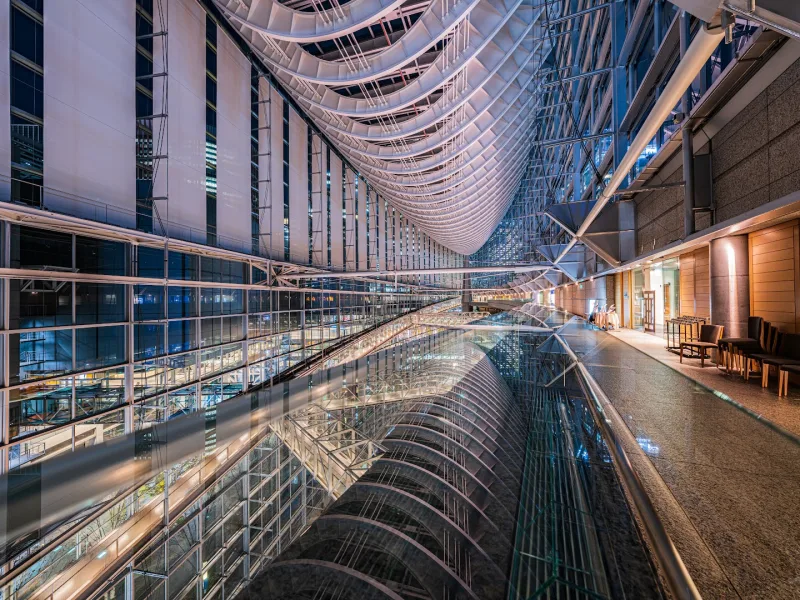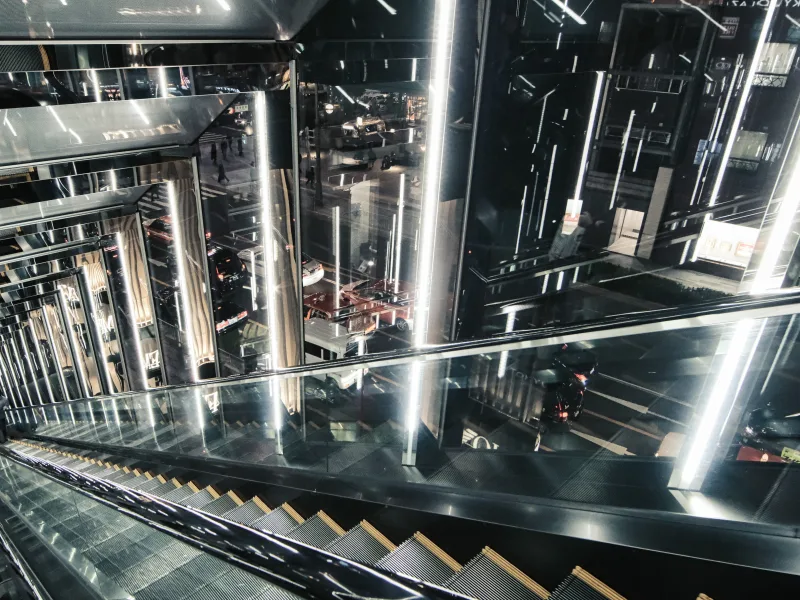The Tokyo International Forum, located between Tokyo Station and Yurakucho Station in Chiyoda City, is one of the capital’s most iconic examples of contemporary architecture—and a magnet for architectural and urban photographers. Designed by renowned architect Rafael Viñoly and completed in 1996, the complex is best known for its breathtaking glass atrium, shaped like a futuristic ship suspended in space. The atrium’s soaring steel framework, expansive glass walls, and side apertures create a constantly shifting interplay of light and geometry, making it a prime spot for dramatic perspective shots and minimalist compositions. For those capturing Tokyo’s urban landscape, the Forum offers an abundance of angles—especially from the upper floors, where the atrium’s full scale and rhythm of repetition are most apparent.


Photographers will find the Forum’s architecture especially captivating at different times of day, as natural light floods the structure from various angles, casting complex shadows and illuminating the fine details of the steel lattice. The glass-enclosed Building G serves as the centerpiece, drawing visitors not only for its design but also for its vibrant cultural offerings, including concerts, exhibitions, and public gatherings. Despite being a busy event venue, the Forum maintains an open and accessible layout with public seating areas, cafes, and art installations—inviting photographers to linger, observe, and compose thoughtfully. Its central Tokyo location, seamless underground access, and open public zones make the Tokyo International Forum both a cultural hub and a photography destination worth exploring year-round.









